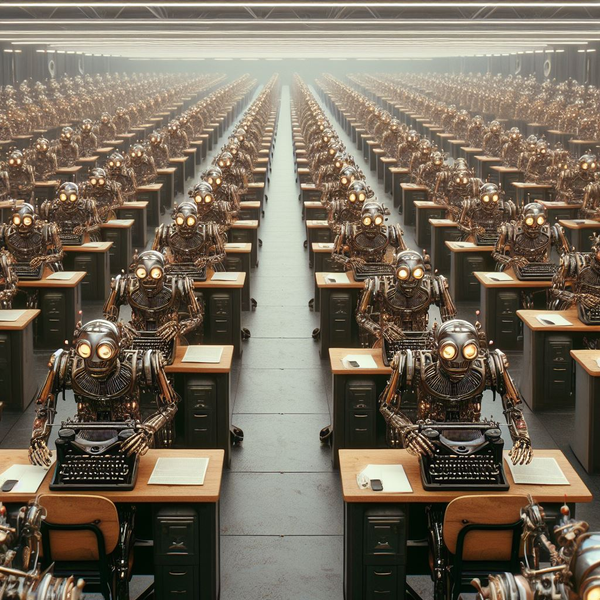Two AI Futures: Star Trek Vs Wall-E

By: John Dolman
As an educator watching AI rapidly evolve, I’m often reminded of sci-fi visions of the future. On one hand, we have Star Trek’s voice-activated computers – powerful tools that aid human creativity and discovery. On the other, there’s Wall-E’s dystopia where humanity becomes passive and deskilled – trapped forever on an interstellar cruise ship being pampered from the cradle to the grave.
Today’s AI brings echoes of both futures. Chatbots now hold fluent conversations, yet some fear complex skills like critical thinking will atrophy among students who rely on them. It’s an exciting, uncertain time.
Advertisement
I believe AI is a tool to empower, not replace, human intelligence. Like Starfleet computers, present-day chatbots expand knowledge access and free us for higher pursuits. Students use them as a launchpad to reach new heights of understanding.
AI also brings equity, giving all children a personalized tutor. And it assists educators in reaching every learner. This AI doesn’t end education, but removes barriers to make it truly universal.
But it’s not all smoothly cruising at warp speed:
Of course, we must be vigilant. Over-reliance on AI risks Wall-E’s fate, where humanity grows complacent. As educators, we have an essential role – teaching students to utilize AI critically. To collaborate with technology as a creative partner, not become subservient to it.
I specialize in English education and applying AI to enhance literacy instruction. For me, AI is a tool that brings stories to life. It summarises and adapts texts to engage all readers. And it helps students actively create their own tales, not just passively consume.
AI will continue advancing exponentially. As educators, we must guide it toward Star Trek’s uplifting future, not Wall-E’s cautionary tale. It comes down to human values – fostering agency, creativity and critical thinking in our students. AI creates new opportunities, but only if we engage with it, adapt our curriculums, our assessment methods, our teaching and our learning – we need a new vision of what education needs to look like.
What will the future hold?
The years ahead will challenge us ethically and intellectually. Yet I believe AI can inspire humanity’s better angels, if we stay committed to equity, ethics and forward progress. By teaching students to use AI thoughtfully, critically, we set them on the path to discovery.
We can even focus more on developing the fundamentals of learning skills, meta-cognition and practical skills.
Just as starships still need captains and crews, schools and classrooms still need teachers. AI will enhance our voyage, but human wisdom charts the course. Personally, I am excited to boldly go where no one has gone before and look forward to making it so.
Engage.
(Now, were off to have some tea; Earl Grey – hot. :-)
—John Dolman is an English and Media specialist with over 25 years' worth of experience in classroom teaching, having led departments and faculties in the UK and Malaysia. Also working as a Lead Practitioner for English while leading schoolwide T&L initiatives.
He now takes a deep dive into the uncharted waters of AI in education - leading staff training and developing CPD resources for educational leaders and classroom practitioners both within and beyond his subject area. He is the author of the blog at https://theaienglishteacher.wordpress.com/





